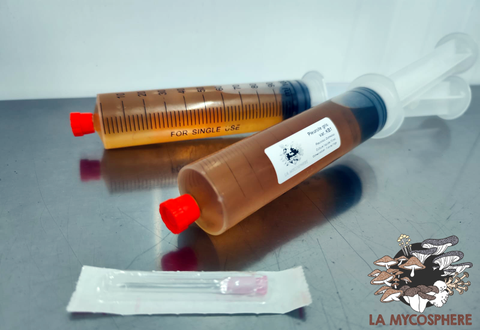From mycelium to mycotherapy, rigor in the service of effectiveness.
We control every step, from cultivation to processing, with a high level of rigor, innovation, and transparency.
Whether you want to grow them at home or enjoy their health benefits, we support you with innovative and sustainable products tailored to your needs.
Choose your path:
- Myceliums, culture blocks, and equipment to help you with your cultivation.
- Superfoods: Mushroom-based supplements to boost your daily well-being.
Join our community and take part in a movement that combines biodiversity, health, and respect for the planet.
Mushrooms Within Reach
Our ProjectReady to get started?
There are many edible mushrooms that you can grow at home, but it really depends on where you want to grow them!
For beginners, we recommend the Oyster mushroom (indoors or outdoors), the Stropharia, (outdoor beds) and the Shiitake (outdoor logs).
All are reliable and will increase the likelihood of a successful attempt!
If you have never grown mushrooms before, we recommend starting with a kit or a ready-to-grow log that requires no special equipment.
Once you are comfortable, look into grain myceliums or log plugs. As you become more comfortable, you can upgrade your equipment.
But it should not require a large investment to get started.
Inside, you can grow mushrooms in your cellar, your garage, your kitchen, your laundry room (with a ready-to-grow log, in jars, in bags, in column bags. Most mushrooms will need a little light to grow.
Outside, you can grow mushrooms on logs, stumps, straw or wood chips.
Check out our guides on mushroom cultivation to learn more.
Grain spawn on plugs is used to inoculate logs. Liquid mycelium is used to inoculate sterilized grains, which then becomes grain spawn, which is then used to inoculate a substrate made of straw or wood chips to produce mushrooms. Grain spawn on wood chips is used to inoculate logs or outdoor beds.
On a small scale, you can use a small spray bottle and 1 or 2 sprays per day should be enough. It actually depends on the natural humidity of the place.
On a medium or large scale, we recommend using a mister.
Mushrooms like humidity, but should not be kept constantly soaked.
Spray with a fine mist until water droplets appear, then monitor them for any signs of moisture loss.
It is preferable to harvest mushrooms before they mature, that is, before they sporulate. After this stage, they are generally more fibrous and keep much less long.
This is learned and varies for each species, of course. You will generally see that the growth of the caps will start to slow down. The color of the caps will begin to lighten.
For oyster mushrooms, the edges of the caps will start to slightly brown and curl up. Don't wait any longer to harvest then.






































